The Structure of the Bassoon
A Long Tube that can be Separated
Five separate parts
The bassoon is a woodwind instrument made of many joints, but it can be separated into five main parts. After the bocal comes the tenor joint, below which is the double joint, then the bore extends upwards to the bass joint, and the bell joint.
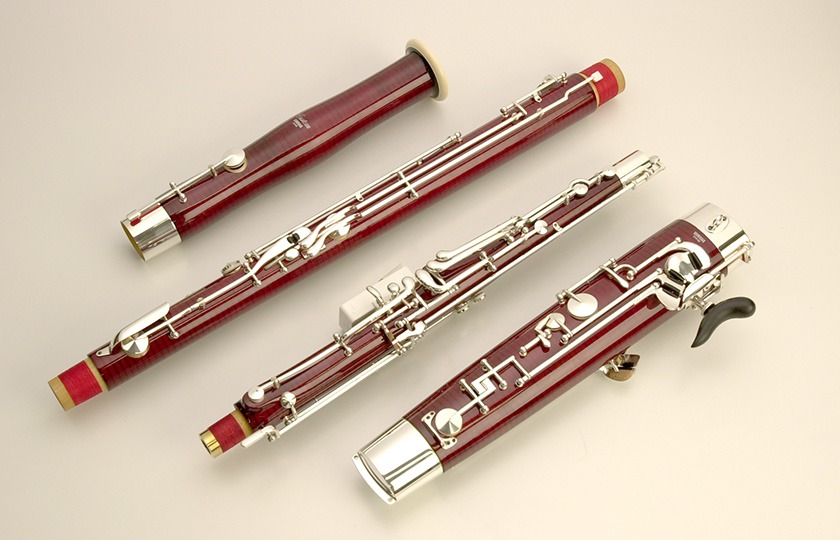
From the upper left, the bell joint, the bass joint, the tenor joint and the double joint.
The double joint, through which the bore passes twice
As its name suggests, the bore passes twice through the double joint, which is the part where the bore turns back on itself. As can be seen in the photograph, a cross section of the joint shows its ellipse shape, with the thinner bore section coming from the tenor joint, and the wider tube being the bore section that extends toward the bass joint. Within the wider tube the grain of the wood can be seen, but the entrance to the thinner tube is covered with metal. The interior is black because an ebonite pipe has been inserted for reinforcement and to protect against moisture. Black ebonite pipe has also been inserted at the tenor joint.
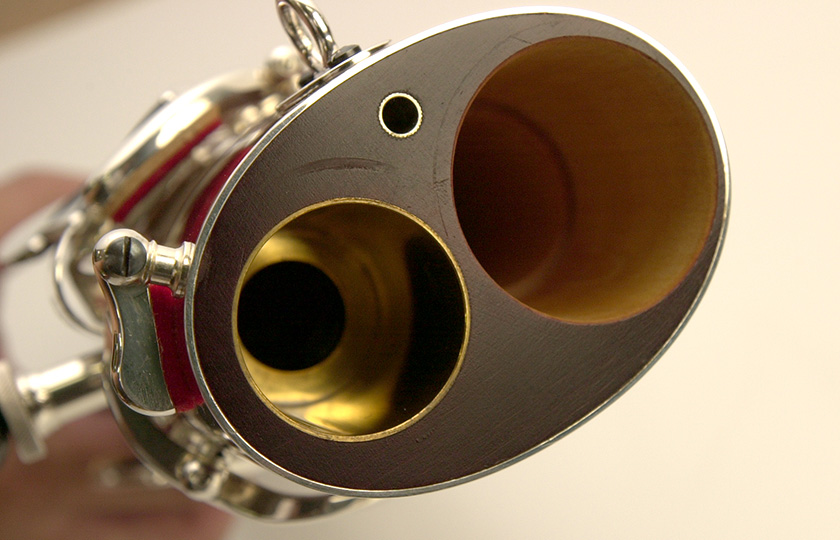
The bore coming from the tenor joint (left) and leading toward the bass joint (right)
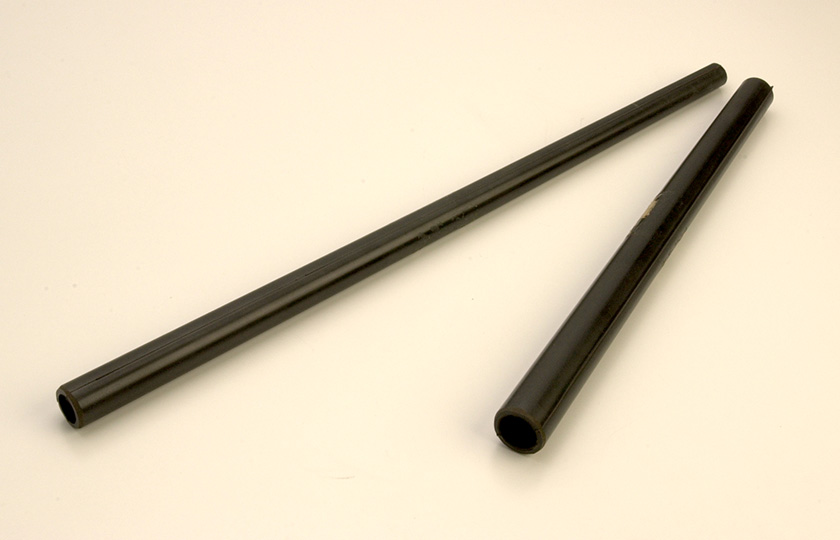
Ebonite inner pipes used in the tenor joint (left) and the double joint (right)
The U-tube, where the bore turns back on itself
If we remove the protector cap attached to the bottom part of the double joint, there is a metal U-tube that bulges into an elliptical shape. Above the U-tube, cork packing is inserted. The turn of the U-tube changes the direction of the two bores within the double joint, connecting them so that they form one tube. For this reason, the U-tube has to be made with great precision. Dropping or denting the part is dropped may lead to deterioration in the instrument's sound.
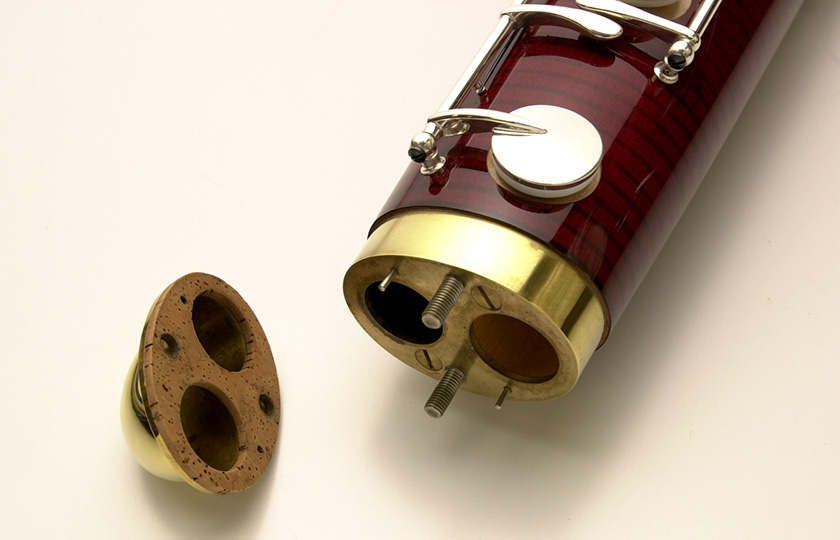
The U-tube and the end of the double joint
The basson before the U-tub
The U-tube was made by German military bandmaster Almenräder in around 1825. As it happens, the low volume of the French-style basson presented a challenge, and was one reason that the U-tube was not adopted for a long time.
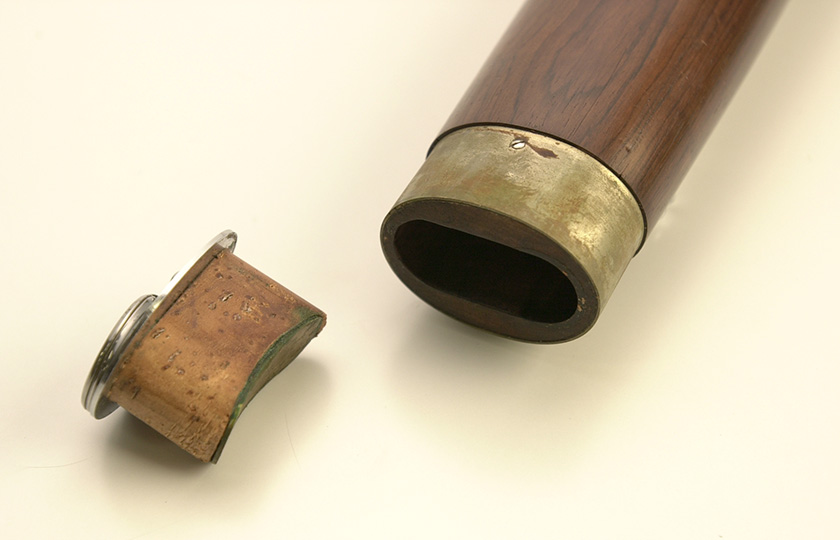
The older style basson did not have a U-tube
Musical Instrument Guide : Bassoon Contents
Structure
- What Kind of Musical Instrument is a Bassoon?
- A Long Tube that can be Separated
- The Bocal and its Various Functions
- Unique Features of the bassoon, and How to Play
- [Experiment1]Comparing the Sound of Tone Holes cut Obliquely and Perpendicular
- [Experiment2]Encasing the Bore in Various Materials
- Bonus Experiment
How to Play
How the Instrument is Made
Choosing an Instrument
Trivia
- An Instrument that is Sensitive to Humidity
- Sounds from water in the U-tube?
- There's a needle in the bocal?!
- Comments by conductors caused popularity to tumble?
- Bassoon classics - Chamber music works
- Bassoon classics - Concertos
- Is the "contra-fagotto" a contrabassoon?
- What is the best tool to file a reed?
